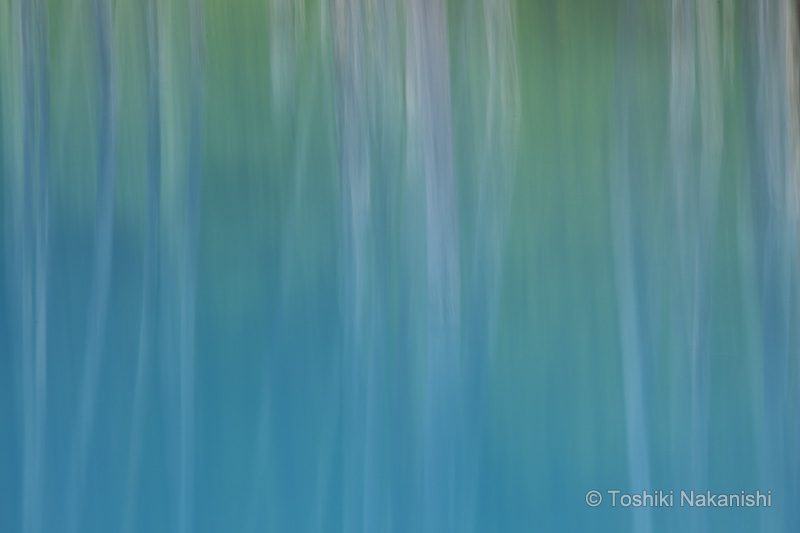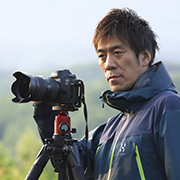Toshiki Nakanishi | Markins Ball Head
Theme
Natural light, sculpture
Photographer
Toshiki Nakanishi
Date
June-August 2017
Location
Hokkaido
Device
Markins
:
Canon
:
EOS 5D Mark Ⅳ
EF16-35mm F4L IS USM
EF24-105mm F4L IS II USM
EF100-400mm F4.5-5.6L IS II USM
EF16-35mm F4L IS USM
EF24-105mm F4L IS II USM
EF100-400mm F4.5-5.6L IS II USM
Velbon
:
N730
Review
Toshiki Nakanishi
Born in Osaka in 1971. Self-taught in photography, began visiting Hokkaido from around 1990, and moved to Biei, where continues to shoot, in 2012. While working on landscapes with a strong focus on light, also ventures into the creation of artistic beauty in nature.
Guiding member of the Japan Landscape Photography Association
- Photo Exhibition -
2010
Solo exhibition "Colors of Light" (NADAR/OSAKA)
2012
Solo exhibition "Colors of Light" (Canon Gallery Ginza/Umeda)
2013
Solo exhibition "HIKARINOIRO+" (Higashikawa Culture Gallery)
2016
Solo exhibition "ORDINARY" (Ricoh Imaging Square Shinjuku and others)
2016
Solo exhibition "unforgettable" (calmspace, Osaka)
Many other group exhibitions
- Publishing -
2012
"Colors of Light" (Seiseisha)
2014
"Power of Light" (Ouka Publishing)
2015
"Biei: A Journey of Light" (Seiseisha)
2016
"ORDINARY" (Fukei Shashin Shuppan)
My photography style
Every morning, I wake up before sunrise and travel nearly 300km a day while taking photos. My shooting style is like life itself, and I take photos as if I'm breathing. When it comes to the shooting style of landscape photographers, people often think of them as setting up a tripod with their camera and waiting for hours. There may be photographers who actually shoot like that, but I'm different. It takes about 10 seconds from arriving at the scene to taking the first shot. I stay in the same place for about 5 to 10 minutes.
Time in nature seems to flow slowly, and the light changes every moment. I always want to capture the momentary expression of that light, so I imagine in advance a place where I think I can meet the conditions I imagine, and I want to take the shutter the moment I encounter that light. That leads to taking the first shot within 10 seconds, but in order to do that, all of the tools need to be refined in usability. Not only the ease of use of the camera, but also the tripod and head to capture a stable composition without blurring.
I also used to use a 3-way head. This was back when I was taking my time to take pictures, and although I could take stable pictures, I was forced to do three steps of operation, which was frustrating. One day, I thought that a ball head would free me from that frustration, and I started using a ball head from a certain manufacturer. As expected, the ball head fit my style. Even though I was using a tripod, it was very light and the composition was perfect. The lightness of being able to freely change the angle with just one knob operation felt like an advantage that is hard to find with a 3-way head.
Some people may say that if you are so concerned about lightness, you should not use a tripod. However, the advantage of using a tripod is not just that it prevents blurring. It stabilizes the composition and increases the accuracy. I believe that it allows you to take pictures that are attentive to every corner of the screen. It's also true that having your left hand free allows you to cut the fog or hold an umbrella, which are benefits that handheld cameras don't offer. That's why I use a tripod in almost every scene. And while using one, I want to be able to do so quickly.
And that's when I got the opportunity to use Markins. Being greedy for tools, I was intrigued by Markins' ball head, so I decided to try it out straight away. The items I installed were the "Q10iQ-RD Lever Shoe Ball Head", the Canon EOS 5D Mark IV dedicated L-plate "PC-542 + LC-542", and the Canon 100-400mm dedicated lens plate "PC-14". I chose the red color for the ball head without hesitation. First of all, I fell in love with the color at first sight. Even among photography equipment that tends to be all black, this red has a unique character. It's a small thing, but the color red is nice to have as it lifts your spirits during daily photography.
Time in nature seems to flow slowly, and the light changes every moment. I always want to capture the momentary expression of that light, so I imagine in advance a place where I think I can meet the conditions I imagine, and I want to take the shutter the moment I encounter that light. That leads to taking the first shot within 10 seconds, but in order to do that, all of the tools need to be refined in usability. Not only the ease of use of the camera, but also the tripod and head to capture a stable composition without blurring.
I also used to use a 3-way head. This was back when I was taking my time to take pictures, and although I could take stable pictures, I was forced to do three steps of operation, which was frustrating. One day, I thought that a ball head would free me from that frustration, and I started using a ball head from a certain manufacturer. As expected, the ball head fit my style. Even though I was using a tripod, it was very light and the composition was perfect. The lightness of being able to freely change the angle with just one knob operation felt like an advantage that is hard to find with a 3-way head.
Some people may say that if you are so concerned about lightness, you should not use a tripod. However, the advantage of using a tripod is not just that it prevents blurring. It stabilizes the composition and increases the accuracy. I believe that it allows you to take pictures that are attentive to every corner of the screen. It's also true that having your left hand free allows you to cut the fog or hold an umbrella, which are benefits that handheld cameras don't offer. That's why I use a tripod in almost every scene. And while using one, I want to be able to do so quickly.
And that's when I got the opportunity to use Markins. Being greedy for tools, I was intrigued by Markins' ball head, so I decided to try it out straight away. The items I installed were the "Q10iQ-RD Lever Shoe Ball Head", the Canon EOS 5D Mark IV dedicated L-plate "PC-542 + LC-542", and the Canon 100-400mm dedicated lens plate "PC-14". I chose the red color for the ball head without hesitation. First of all, I fell in love with the color at first sight. Even among photography equipment that tends to be all black, this red has a unique character. It's a small thing, but the color red is nice to have as it lifts your spirits during daily photography.


EF 100-400mm f/4.5-5.6L IS II USM Lens Plate 「PC-14」
The rhythm of shooting
Now, let's get to the main topic. The first thing that surprised me about the Markins ball head was its holding power. Even when a telephoto zoom lens was attached to a Canon EOS 5D Mark IV, it didn't move at all. Just by turning the ball fixing knob a little, there was no need to worry about the camera sagging, even if it was pointed at an angle. I think this is because the processing precision of the ball part is very excellent, but in terms of sensation, the camera stops exactly when you turn the knob, bending your wrist slightly forward. This is very important, and it is actually rare to find a ball head that can stop the movement of the head exactly where you want it to after you have decided on the framing. Moreover, if you return the ball fixing knob a little, you can change the composition while the camera is still. This feeling cannot be understood by looking at the specifications, so it is important to use it and think, "Ah, this is good."
The Arca-Swiss compatible quick shoe is also extremely convenient. I hope that not only will I be able to achieve my self-imposed quota of taking the first shot within 10 seconds, but I will also be able to do it within 5 seconds. Just set up the tripod, place the camera on the head and push down the lever. The camera is now firmly fixed in place. In my case, it only takes 1-2 seconds.
Also, by using the L-plate, you can instantly change the vertical and horizontal composition without changing the optical axis, and once you start using it, you'll find it a pleasure you won't be able to stop. The L-plate matches the camera perfectly, so it doesn't stand out too much, and even if you switch to handheld shooting, you won't feel the need to remove it. Therefore, if you attach a plate to each camera and lens you own, I think you can shoot lightly without slowing down your tempo.
The Arca-Swiss compatible quick shoe is also extremely convenient. I hope that not only will I be able to achieve my self-imposed quota of taking the first shot within 10 seconds, but I will also be able to do it within 5 seconds. Just set up the tripod, place the camera on the head and push down the lever. The camera is now firmly fixed in place. In my case, it only takes 1-2 seconds.
Also, by using the L-plate, you can instantly change the vertical and horizontal composition without changing the optical axis, and once you start using it, you'll find it a pleasure you won't be able to stop. The L-plate matches the camera perfectly, so it doesn't stand out too much, and even if you switch to handheld shooting, you won't feel the need to remove it. Therefore, if you attach a plate to each camera and lens you own, I think you can shoot lightly without slowing down your tempo.
 |
 |
Vertical positioning with L-plate Can be changed instantly from the normal position |
Vertical position with ball tilted The optical axis changes and the center of gravity becomes biased |
The sense of rhythm in photography is reflected in the work. Works shot with a good tempo and accurate composition have a sense of rhythm, and I think that ultimately they resonate with the heart. Of course, that's not to say that photos taken carefully don't resonate, but in my case, I want to elevate a moment of light into an eternal work of art, so I place great importance on a sense of rhythm. To achieve this, a ball head is a must-have item. What's more, it has to be a ball head that "stops." A ball head that allows you to frame accurately with as little action as possible. Markins' ball heads more than meet that requirement.

● Hay rolls and summer clouds
Canon EOS 5D Mark IV、EF24-105mm F4L IS II USM
Aperture Priority AE (F11・1/50 s) ISO200
Canon EOS 5D Mark IV、EF24-105mm F4L IS II USM
Aperture Priority AE (F11・1/50 s) ISO200
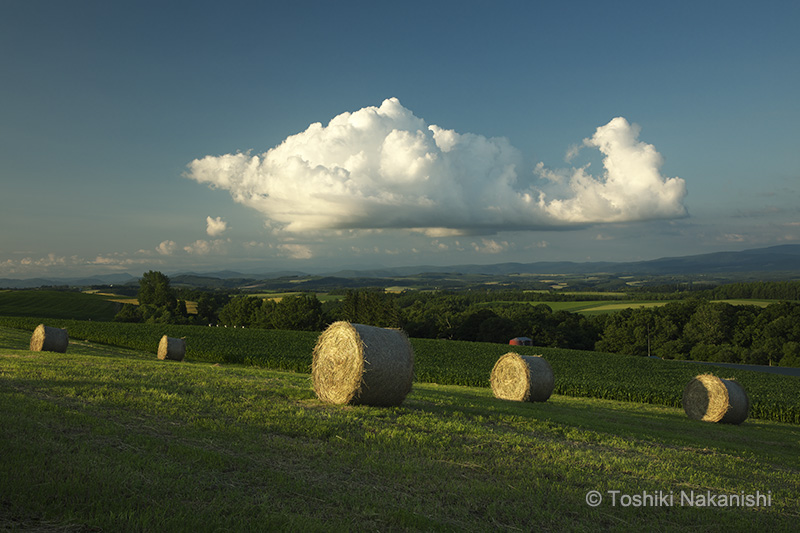
● Morning sun shining into the wheat field
Canon EOS 5D Mark IV、EF24-105mm F4L IS II USM
Aperture Priority AE (F11・1/50 s) -0.7EV ISO100
Canon EOS 5D Mark IV、EF24-105mm F4L IS II USM
Aperture Priority AE (F11・1/50 s) -0.7EV ISO100
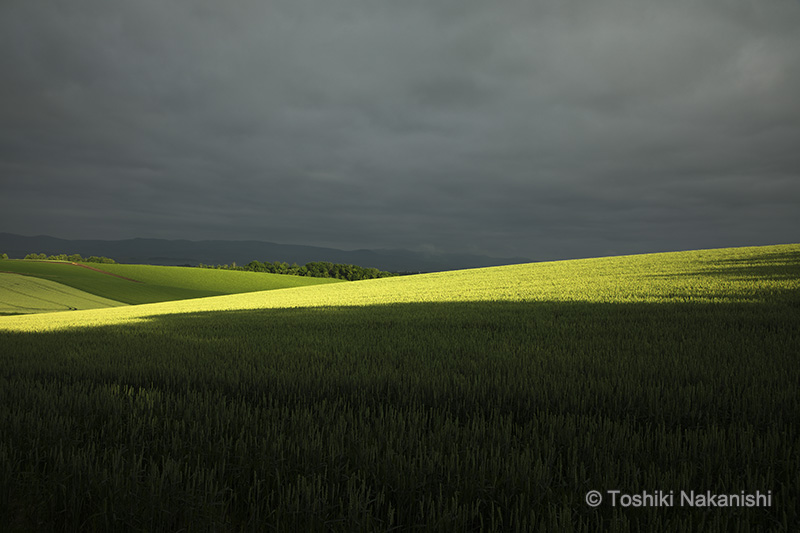
● Golden wheat hills
Canon EOS 5D Mark IV、EF100-400mm F4.5-5.6L IS II USM
Aperture Priority AE (F11・1/50 s) ISO100
Canon EOS 5D Mark IV、EF100-400mm F4.5-5.6L IS II USM
Aperture Priority AE (F11・1/50 s) ISO100
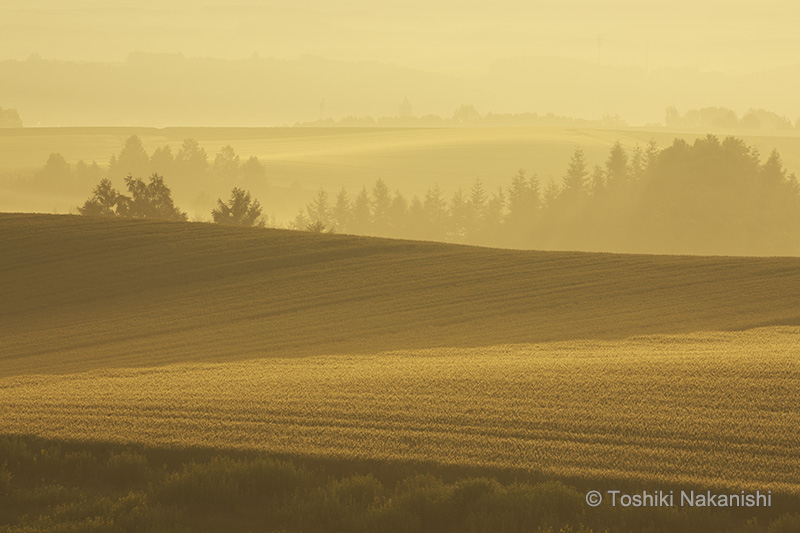
● Impression of blue
Canon EOS 5D Mark IV、EF100-400mm F4.5-5.6L IS II USM
Aperture Priority AE (F16・1/1.3 s) ISO100
Canon EOS 5D Mark IV、EF100-400mm F4.5-5.6L IS II USM
Aperture Priority AE (F16・1/1.3 s) ISO100
